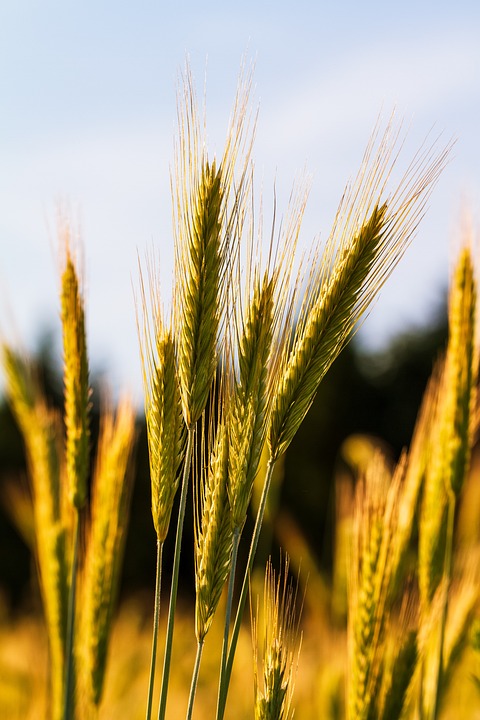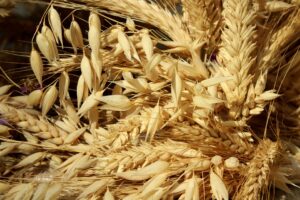Rye: An Essential Crop in Medieval Europe
Rye has a long and storied history in Europe, particularly during the medieval period. It was a staple crop that provided sustenance to millions of people across the continent. Rye cultivation played a crucial role in the development of European agriculture and economy, and its impact can still be seen today in various culinary traditions and cultural practices.
Origins of Rye Cultivation
Rye is believed to have originated in the region of Anatolia, in modern-day Turkey. It was one of the first cereals to be domesticated by humans, dating back to around 10,000 years ago. From Anatolia, rye cultivation spread to Europe, where it quickly became a popular crop due to its ability to thrive in cooler climates and poor soil conditions.
By the medieval period, rye cultivation had become widespread in Europe, particularly in regions such as Scandinavia, Eastern Europe, and the Baltic states. It was a hardy crop that could withstand harsh winters and outcompete other cereals like wheat and barley in colder and wetter environments.
The Importance of Rye in Medieval Europe
Rye was a vital crop in medieval Europe due to its versatility and adaptability. It was used to make bread, porridge, beer, and even spirits like vodka. Rye bread, in particular, was a staple food for peasants and lower classes, as it was cheaper and more readily available than wheat bread.
Rye cultivation also played a significant role in the economies of many medieval European countries. It provided a reliable food source for rural populations and helped to stabilize food prices during times of scarcity. Additionally, rye was often used as a form of payment or tribute in feudal societies, further cementing its importance in medieval Europe.
Rye Cultivation Techniques in Medieval Europe
Rye was typically grown in small plots of land by peasant farmers in medieval Europe. The crop was sown in the autumn and harvested in the summer, making it an ideal crop for regions with short growing seasons. Rye thrived in poor soil conditions and required minimal care, making it an attractive option for subsistence farming.
Medieval farmers used a variety of techniques to cultivate rye, including crop rotation, intercropping, and fallowing. Crop rotation helped to maintain soil fertility and reduce the risk of pests and diseases, while intercropping allowed farmers to maximize their yields by planting multiple crops in the same field. Fallowing, or leaving a field unplanted for a season, helped to rejuvenate the soil and prevent erosion.
The Decline of Rye Cultivation
While rye was once a dominant crop in medieval Europe, its popularity began to decline in the centuries that followed. The introduction of new crops like maize and potatoes from the Americas, as well as improvements in wheat cultivation techniques, led to a decrease in rye production across the continent.
Additionally, changes in agricultural practices and land ownership during the Industrial Revolution further marginalized rye cultivation in Europe. Large-scale farming, mechanization, and the rise of monoculture farming systems all contributed to the decline of traditional crops like rye.
Rye Cultivation Today
Despite its diminished role in European agriculture, rye cultivation still persists in certain regions and countries. In countries like Poland, Finland, and the Baltic states, rye remains a popular crop due to its ability to thrive in colder climates and poor soil conditions.
Rye is also gaining popularity in the health food industry, as it is a rich source of nutrients like fiber, vitamins, and minerals. Rye bread, in particular, has become a trendy food item in recent years, with many consumers seeking out its unique flavor and nutritional benefits.
While rye cultivation may no longer be as widespread or economically important as it was in medieval Europe, its legacy lives on in various culinary traditions and cultural practices. The humble rye grain continues to hold a special place in the hearts and stomachs of Europeans, reminding us of the enduring legacy of this ancient crop.
Conclusion
Rye cultivation was a vital component of medieval European agriculture, providing sustenance to millions of people and shaping the economies and cultures of the continent. While its popularity has waned in modern times, rye remains an important crop in certain regions and continues to be valued for its nutritional benefits and unique flavor. The legacy of rye cultivation in medieval Europe lives on in various culinary traditions and cultural practices, reminding us of the enduring impact of this ancient crop.





